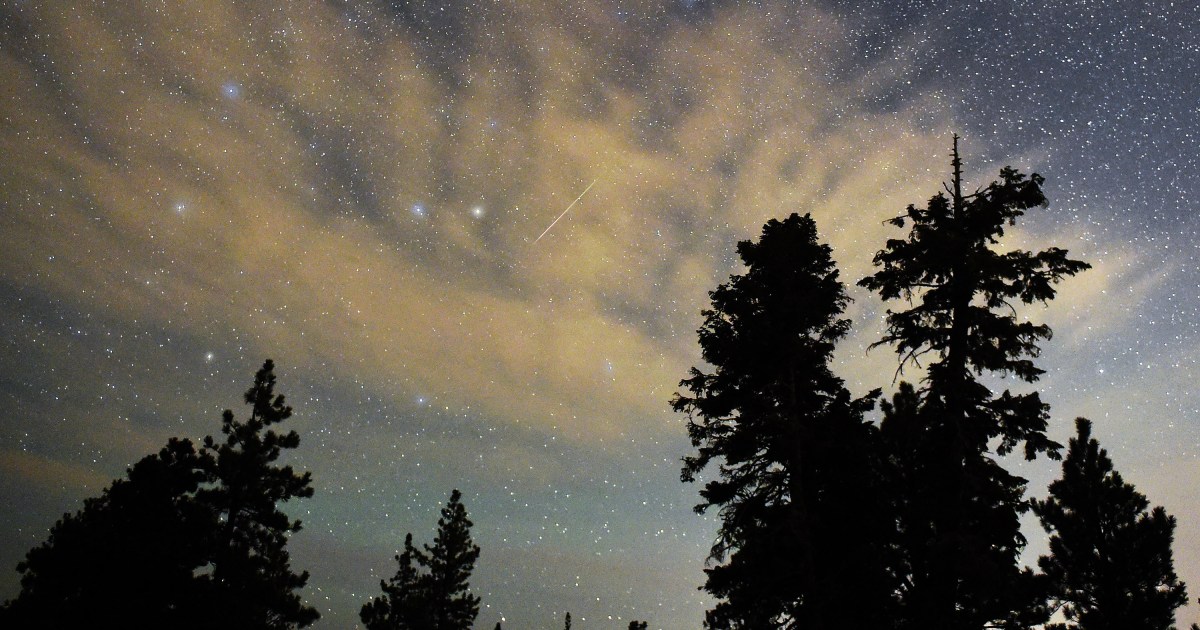It’s an exciting week for stargazers, as the Orionids, also known as the Orionid meteor shower, is putting on its yearly mid-October display, widely considered to be one of the most beautiful showers of the year.
The 2025 Orionid meteors peaked on Oct. 20-21, when up to 20 shooting stars had the potential for visibility across the night sky. According to EarthSky, the optimal time to view the meteor shower, which is known to produce occasional fireballs, was 8:00 p.m. on Monday, Oct. 20.
They originate from a point of origin called a “radiant” located in close proximity to the red star Betelgeuse in the constellation Orion, hence the meteor shower’s name.
The Orionids are distinguished by both their brightness and speed, according to NASA. They travel into the Earth’s atmosphere at 41 miles per second, leaving behind glowing “trains” made up of incandescent bits of cosmic debris that burn up due to the friction of atmospheric entry. These trains can be visible from anywhere from seconds to several minutes.
What is the Orionid meteor shower?
The Orionids is one of two meteor showers associated with comet 1P/Halley, otherwise known as Halley’s Comet. The other is the Eta Aquariids, which are visible in May.
Each time that Halley makes a return to the inner solar system the comet’s nucleus emits ice and rocky dust into space. Meteors originate from leftover comet particles. When the comets orbit around the sun, the debris they leave behind gradually spreads into a trail around their orbit.
When the Earth passes through these debris trails, the tiny pieces collide with its atmosphere, which causes the colorful streaks in the sky. As such, the Orionid meteor show occurs when the Earth passes through the debris left behind from Halley, for approximately one week in mid to late October. Some years have seen meteors occur at rates of us to 50 to 70 per hour.
Though, the Comet Halley itself is far more elusive. It takes about 76 years for Halley to orbit the sun, and the last time it made an appearance was in 1986. It won’t enter the inner solar system again until 2061.
How long does the Orionid meteor shower last?
The peak time to view the Orionid meteors was in the very early pre-dawn hours of Oct. 21 in the United States, when the constellation Orion will be positioned high above the southern horizon. The shower’s peak correlates with the monthly new moon phase, and the moonless sky provides the perfect viewing conditions for the cosmic light show.
However, even if you missed the peak, the meteor shower is still visible from approximately Oct. 2 through Nov. 7, as the Earth passes through Halley’s debris trail.
Robert Lunsford of the American Meteor Society told Space.com that there will still be plenty of meteor activity after the beginning of the peak, so don’t fret if you overslept or clouds ruined the show.
“The Orionids will peak in the period of October 21-23. Rates will fall very slowly after these dates so the mornings of October 24-26 will still provide hourly rates in excess of 10 per hour when viewing from rural dark skies,” Lunsford explained. “Note by then the radiant will have moved eastward into western Gemini so folks should not be surprised to see these meteors shooting from that constellation instead of Orion.”
When is the best time to view the Orionid meteors?
The Orionid meteors are generally visible between midnight until dawn, particularly during the peak nights, with the best odds in the early morning hours before sunrise. For optimal viewing, look toward the southern sky and find a dark spot away from city lights. Also, make sure to allow your eyes about 15 to 30 minutes to adjust to the dark.















































































































